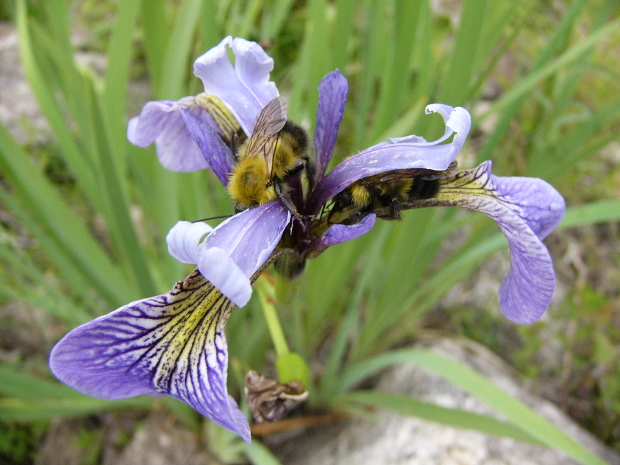Pollinators are a key component of biodiversity, providing vital ecosystem services to crops and wild plants. Over 100,000 invertebrate species — such as bees, moths, butterflies, beetles, and flies — serve as pollinators worldwide. At least 1,035 species of vertebrates, including birds, mammals, and reptiles, also pollinate some plant species. The loss of wild pollinators would likely have far reaching, cascading effects on plant communities and on organisms that depend on native plants for shelter and sustenance. Additionally, the projected economic costs associated with wild pollinator decline as a result of decreased crop yield are significant.
Growing evidence points to substantial losses of wild pollinators in many regions of the globe, with the strongest evidence coming from Europe and North America. The US Fish and Wildlife Service (2014) lists over 50 pollinator species as threatened or endangered, and wild Honeybee populations have dropped 25% since 1990. Similarly, examination of long-term museum databases has revealed that almost one-third of North American bumble bees have experienced moderate to severe declines (Thorp et al. 2013). The Rusty-patched Bumble Bee (Bombus affinis) is now almost impossible to find in Ontario, with population declines of up to 99% over the last two to three decades. As of 2010, the Rusty-patched Bumble Bee was listed as endangered on the Ontario Species at Risk list, and in 2012 it was added to the national endangered species list. The Gypsy Cuckoo Bumble Bee (Bombus bohemicus), though less abundant, was also widespread across Canada. Despite an increased effort to find this species, none have been seen since 2008, and in 2014 this species was added to the national endangered species list. The General Status of Wild Species in Canada’s Wild Species 2010 report included for the first time the status of Canada’s bumble bees. The report included rankings for 26 Ontario species with the following results: 2 may be at risk, 5 sensitive, 9 secure, and 10 undetermined. For the majority of native pollinator species, detailed population information is lacking.
There are many potential drivers that affect wild pollinator abundance and diversity, and different environmental drivers rarely act in isolation. Interactive, non-additive effects, where one sub-lethal driver can increase the severity of another driver, can help to explain ongoing declines in wild pollinators. Among the most important drivers are land-use change with the consequent loss and fragmentation of habitats, increasing pesticide application (e.g., neonicotinoids) and environmental pollution, decreased resource diversity, invasive species, the spread of pathogens, and climate change. At present there is not enough information to predict the severity of the impact of these threats on pollinators. The Ontario government has developed a proposal for enhancing pollinator health and reducing the use of neonicotinoids.
References
Thorp, R., S. Colla and S. Jepsen. 2013. North America. P. 6 In P. Williams and S. Jepsen (Eds.). Bumblebee Specialist Group Report 2013.IUCN SSC Bumblebee Specialist Group. 14 pp.
US Fish and Wildlife Service. 2014. Pollinators listed as endangered or threatened species. Available at: http://www.fws.gov/pollinators/programs/endangered.html

